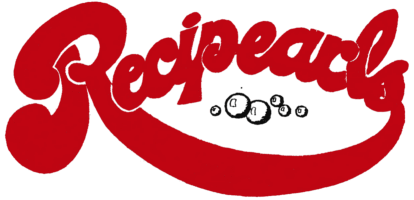Be sure to check the Harvest Calendar for Peak Seasons for Fruits
FRUITS THAT RIPEN AFTER PICKING:
Apples, Apricots, Avocados, Bananas, Peaches, Pears*
FRUITS THAT DO NOT RIPEN AFTER PICKING:
Berries: Blackberries , Blueberries, Raspberries, Strawberries
Cherries, Grapefruit, Grapes, Lemons, Oranges, Pineapples, Plums, Watermelons
FRUIT or VEGETABLE? According to botanists (those who study plants) a fruit is the part of the plant that develops from a flower. It’s also the section of the plant that contains the seeds. The other parts of plants are considered vegetables. These include the stems, leaves and roots — and even the flower bud.
The following are technically fruits: avocado, beans, peapods, corn kernels, cucumbers, grains, nuts, olives peppers, pumpkin, squash, sunflower seeds and tomatoes. Vegetables include celery (stem), lettuce (leaves), cauliflower and broccoli (buds), and beets, carrots and potatoes (roots).
AVOCADO – Don’t wait for an avocado to ripen. Simply poke the skin in a couple places.Then microwave on HIGH for up to 1 min. It’s then ready to use immediately.
TOMATOES – Peeling and Seeding and Chopping
Bring pot of water to vigorous boil.
Have bowl of cold water ready as well.
Remove the core from the tomato and score the other end with a shallow cross
Plunge the tomato into the boiling water for a minute or less, just til skin appears to be loosening.
Immediately transfer tomato to the ice water to stop the cooking and cool it.
Peel skin off.
Cut tomato in half at the equator and gently squeeze out the seeds, poking and scooping with your fingers as needed.
Now your tomato is ready to be chopped
HOW TO PICK A FRESH WATERMELON: Peak time: June thru August. Watermelons do NOT ripen after picking.
Look for a symmetrically shaped round or oblong melon, firm to the touch, with good skin color. The side grown next to the ground should be yellowish or cream colored. If white or very pale green, melon is immature and won’t
ripen further.
TO TEST for ripeness, slap the melon with the open palm of your hand. If the sound is deep and resonant, the melon is ripe. If you hear a thud, the melon is under ripe; if sound is hollow, melon has passed its prime. When cut, flesh should be firm, fresh looking with good red color, without hard white streaks and seeds should be dark brown/black.
HOW TO PICK FRESH…PEARS*
Peak season: In USA, late August thru September in the South, and September & October in the North.
Pears DO ripen after picking.
About 2 medium pears = 1 cup sliced pears.
About 4 medium pears = 1 cup pureed pear.
About 3 medium pears = 1 pound of pears
When is a pear is ripened to perfection? Hold the pear gently but firmly in the palm of your hand, as a baseball pitcher might hold the ball. Apply the thumb of that same hand to the pear flesh just below the point where the stem joins the fruit. When the flesh beneath your thumb yields evenly to gentle pressure, it is time to eat your pear. If you have to push more than slightly, it is not ready yet.
Storing Pears and Ripening Tips: Most stores don’t sell really ripe pears because they bruise so easily, but it’s very easy to ripen them at home. If pears are picked before they are fully ripe, they should be ripened at a temperature of 60° to 70°F. This will result in optimum quality and smoothness of flesh. If you want to keep pears for a longer period of time, store the freshly picked fruit in the refrigerator. They’ll keep for many weeks!
THREE BASIC TYPES OF PEARS:
1) Fall pears, that do not need a storage period before they are ready to use, such as Bartlett, Clapp Favorite and Orcas
2) Winter pears, that will not mature properly unless they are given a resting period in cold storage immediately after picking, such as Bosc, Comice and Highland
3) Asian Pears, which do not need a storage period before they are ready to use.
Fall pears can be kept on a shelf at room temperature until ready to eat – when yellow color develops and the fruit begins to soften. Fall pears can be stored but usually do not keep for more than 4–6 weeks.
Asian pears can be stored but may develop a strong, wine-like taste if kept too long. If you store Asian pears loosely in a box, clip the stems short, because the stiff stems can puncture and damage neighboring fruit. And allow enough space that the pears do not touch each other; pears that rub each other will often become dark at the rub points.
Winter pears should be put into some kind of cold storage (below 40°F, down to 33°F) for at least 3 weeks. After that period, you can start to bring out fruit as needed to soften up at room temperature. At first it may take 5 to 9 days before the pears are ready to eat; later on a couple of days at room temperature may be long enough.
What is the best way to eat a perfectly ripe pear? After years of study, scientists have found that a really juicy pear is best eaten while naked, in the bathtub, so that you needn’t be concerned about the abundant juice streaming down your chin.
